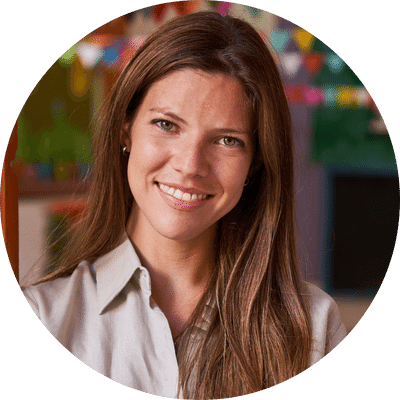

Introduction
All students are entitled to a quality education and we need to find better ways for enabling each one to be engaged in meaningful learning activities and make progress. And we understood that in order to achieve this, we need first of all to promote an openness to student diversity, an attitude of appreciation for diversity, an assumption that it is normal to be different and to provide a differentiated curriculum and learning experience. Students are diverse and engage with the curriculum at diverse points and in diverse ways, and good teachers are first of all prepared for responding to student diversity. Research on differentiated teaching and inclusive education for all is filled with literature on dealing with diverse learners. And, with the advent of increased knowledge concerning human development and learning, the opportunity to outline more effective educational practices has also increased.
This infers that it’s important for teachers to identify best classroom practices for closing the achievement and learning gaps which are persisted by individual differences including, learning styles, intelligence, motivation, gender, age, personalities, race/ethnicity, socio-economics, language, and disability.
This essay draws implications from the key learning theories, approaches to differentiated teaching strategies to support the interplay between micro and macro factors that affect how students learn and why acknowledging student diversity is important in paving the way for great teaching and classroom practices.
Analysis of Pedagogy and Classroom Practices
All students are entitled to quality education so it’s imperative to find better ways for enabling each one to be engaged in meaningful learning activities and make progress. To achieve this, it’s important for teachers to embrace student diversity which may consist of their reading level, athletic ability, cultural background, personality, religious beliefs, motivations, intelligence and so on and so forth. This will help them devise teaching strategies that are based on an understanding that students are diverse and they have their individual differences that shape their engagement with the curriculum at diverse levels and in diverse ways.
In order to understand how students can achieve to the best of their potential, knowing how they learn is important. We need to delve into some of the classic pedagogical approaches and learning theories to dissect micro factors at play.
Broadly speaking, behaviorism is a learning theory that supports teacher-led approaches where the teacher is the sole authority figure. As per Bush, (2006), Behaviorists believed that “only observable, measurable, outward behavior is worthy of scientific inquiry”. Thus, they focused primarily on learning that is affected by changes in behavior. Classroom practices based on behaviorism approach may mean that knowledge is given out from a segregated curriculum having multiple subjects, and directed from the teacher to the students in a fixed structured manner, with little interaction with students. It may include lecturing, demonstration, rote learning and imitation.
This approach is both widely supported and criticized by scholars. It is evident that behaviorism promotes superficial nature of the knowledge gained by the students and it also leads teachers into coming up with strategies based on ‘one-size-fits-all’ view, downplaying individual differences accounting for the teacher being unaware of students’ current knowledge or misconceptions.
In contrast, Constructivism is a pedagogical approach in which according to Draper, R. J. (2002), learners create their own knowledge based on interactions with their environment and people. Constructivist approaches help teachers in classroom to design activities that build on children’s present knowledge and match their developmental stage, and challenge them so that they continue to make progress.
Based on constructivism, another approach Social constructivism sees knowledge as socially constructed and learning as essentially a social process. As per Au, K. H. (1998), it is mediated through cultural tools, which are simplified by drawing on examples learners are well acquainted with. Small-groups, pair and whole-class interactive work, dialogue with individuals, demonstrating and co-operative learning can all be seen as social constructivism. It broadly works in a way that utilizes teacher guidance and is learner-centered in which both the parties are involved in classroom practices and cater to diversity among the students.
Pedagogical approaches need to address and be in line with the learning styles of the students. According to Eddy, (1999), auditory learners prefer to receive ideas and information by hearing them. Students that depend upon auditory learning, may have trouble with reading or writing, but they are great at listening to memorizing spoken words. They often benefit from discussion-based classes and the opportunity to give oral presentations. As per Ibrahim, R. H., & Hussein, D. A. (2016), visual learners prefer to receive information by seeing it. Vincent, A., & Ross, D. (2001) points out that for such learners any visual aid, including drawings, graphs, and maps are helpful. Kinesthetic learners learn best when they explore and experience their surroundings.
Taking these learning styles into consideration teachers can come up with differentiated classroom teaching strategies and create more inclusive classrooms where every student has a chance to progress and succeed. Hall, T., Strangman, N., & Meyer, A. (2003) suggest that students coming from different cultures, backgrounds and educational environments than their majority classmates require contextually familiar concepts to learn and thus, learn in different ways. Learning for physically challenged students is difficult in a regular classroom.
Another view in this regard is that of motivation which entails utilizing extrinsic and intrinsic reinforcers that motivate learners into learning and behaving accordingly. For some students, extrinsic reinforcers like good grades and verbal praises are important, while for some intrinsic reinforcers like an internal interest in a subject or general curiosity are important. However, according to Sansone, C., & Harackiewicz, J. M. (Eds.). (2000), specific reinforcers lose their power over time and the use of extrinsic reinforcers can also undermine intrinsic motivation.
According to Carton, J. S. (1996), cognitivism is a concept of learning which is centered around the need for extrinsic or intrinsic stimulation in order to perform well. The proponents of this theory argue that there is a key role of motivation behind every learner’s willingness to learn. It can be extrinsic i.e. the reinforcement of tangible rewards such as grades, awards, and appreciation from an authoritative figure. This motive draws its power from the outcome of the activity, rather than the process of doing it. It works for a short time span, and as soon as the incentive of the reward diminishes, so does the motivation behind the task. Therefore, it is important for teachers to keep the intrinsic motivators in their students alive by understanding their individual needs, skills and talents. Instead of telling them what to do and how to do it, teachers should focus more on instigating curiosity and challenging them to be better learners.
Similarly, there are individual differences in intelligence. According to Mangels, J. A., Butterfield, B., Lamb, J., Good, C., & Dweck, C. S. (2006), students with a fixed mindset work towards performance goals including grades and other positive judgments by teachers and peers. On the other hand, students with growth mindset view of intelligence which is variable and can be attained through learning.
Apart from individual differences in motivation, intelligence, and learning styles, it is equally important to understand the influence of child development on the way he/she learns because the delicate intricacies of a child’s mind are woven through a complex cumulation of environment, genetics and experiences.
Social and Emotional Development
Hoff, E. (2003), states that social and emotional development of a child plays a crucial role in how he/she learns and behave. In order for a child to achieve learning and academic success, it’s important to understand the development of their social and emotional capabilities. Competence in these areas give children the capacity to engage in academic tasks by increasing their ability to interact constructively with teachers, work effectively with peers, and dedicate sustained attention to learning.
Howe, C., & Mercer, N. (2007) suggest that the relationship of a child with their family and tutors play a substantial role in how they perceive themselves. Ryan, R. M., & Deci, E. L. (2000) further elaborate on the emotional quality of their interaction, inferring that shared experiences and the adult’s remarks on the child’s capabilities – help motivate young mind’s learning, inspire their self-confidence and shape their personality. The attributes of their daily interactions provide frameworks for enhancing the growth of cognitive and learning skills and the emotional sanctuary in which early learning prospers.
According to demographics, students who have a strong instructional backbone are better at grasping concepts and forming abstract impressions. Applauding a toddler’s physical abilities or appraising the proses of a middle schooler fulfills their primal need for appreciation and for someone to believe in their capabilities. As per Maynard, T., & Waters, J. (2007), learning environment greatly affect a child’s learning ability; Interactively reading a book and watching a movie together, helping them understand the plot along the way not only scaffolds their insight but bridges their language barrier as well. Conversing about a sibling’s tantrum that affected the aura of their home life validates their feelings, discussing a classroom feud helps them learn conflict resolution and assume personal responsibilities, better understanding the dynamics of relationships.
Cognitive Development
Against the backdrop of socioemotional development, lies the instructional and educational support of the teachers, a child has during their early years of learning. When tutors practice in a way that is aware of the technicalities and needs of the cognitive processes of children they work with, they can effectively strategize the ideal means through which they can enlighten new learning opportunities. They should be able to inspire creativity, higher-level thinking and abstract understanding of continuously growing concepts.
According to Tudge, J., & Rogoff, B. (1999), as the child ages, they are introduced to more complex vocabulary and grammar, mathematical connotations, scientific theories and various creative outlets. As they grow in their ability to make mental representations, they might face difficulties in comprehending intellectual notions without the aid of real-life experiences and tangible learning approaches. At this point, the tutors should maintain a balance between independent erudition and instructional help, such that the children can make self-discoveries, explore genres and build their own comprehension of the world around them while having the consistent support of a superior guide.
Anaya, G. (1996) emphasizes in keeping in mind is the individual differences in every child based are on a multitude of factors. It is important to remember that every child reserves a distinct psychology and learning curve, they are not supposed to conform to cultural or educational ideals or change their shape to fit into a mold. The people around them should always respect and appreciate their individuality and help them grow based on their uniqueness.
As we establish the diversity in the science of learning, the miscellany of teaching skills becomes evident as well. Teaching is not confined to a given set of rules and regulations, and there is certainly no ideal way to teach. The alterations in aptitudes are highly variable, and to reach the mass mind set amidst this sea of differences is an art that is second to none. A good strategy would include a cumulation of the understanding of children’s previous knowledge, their studying tactics, their drivers, and concept building abilities. Teachers have to take into account the levels of hierarchy in a classroom as well as the shift in learning curves that every child possesses. It is necessary to acclimate teaching strategies according to individual needs based on three types of learning styles: visual, auditory and kinesthetic.
It is ardently suggested that a teacher must not be judged on their ability to feed content but on their excellence in providing a shoulder to all the students in order to climb the ladder of knowledge. The core of teaching lies at knowing when to be patient and when to test their students’ academic boundaries, when to actively engage with their class and when to overlook from the shadows as the children struggle with the complexities of life.
Lastly, teaching is actually a profession of lifelong learning. During the journey of educating, one must be open to new experiences and receptive enough to question their beliefs even if the change is brought about by someone much younger. Children may not always obey but they are sure to mimic, and for them to grow into wonderful adults, they must have a wonderful example to look up to.

Competences: Management, Accounting Marketing, International Relations

Competences: Finance, Economics, Business Strategy, and Entrepreneurship

Competences: Law, Political Science, Public Policy, and Negotiation

Competences: Psychology, Sociology, Counseling, and Human Development

Competences: Environmental Science, Sustainability and Renewable Energy

Competences: History, International Law, Diplomacy, and Geopolitical Analysis











